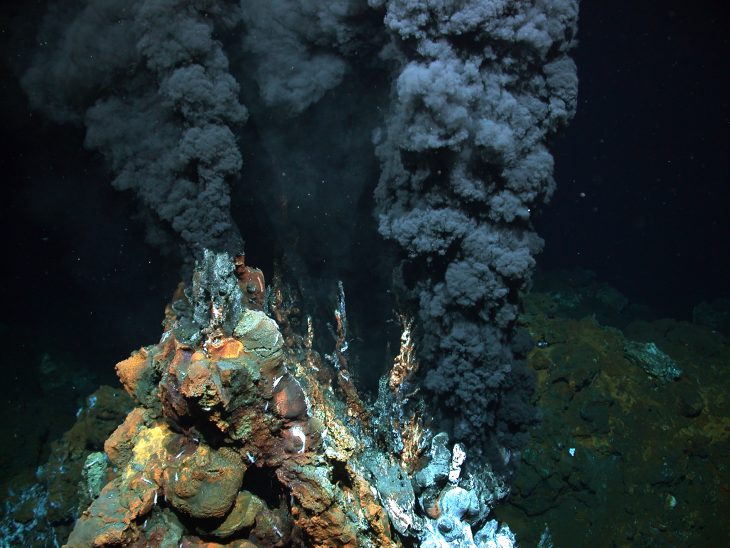The earliest fossil evidence of life is about 3.5 billion years old, but that evidence doesn’t answer very many of our questions about life on Earth. It does not tell us when or how life first emerged on Earth. It does not tell us where the earliest life on Earth lived or what kind of energy it used to survive. These are questions nearly all of us, including scientists, wonder about because we all want to understand where we came from.
Scientists have developed different possible answers to these fundamental questions about life on Earth, creating what is often described as multiple working hypotheses. One hypothesis about Earth’s earliest life suggests that it formed in hydrothermal vents on the seafloor. However, it is challenging to test or find evidence to support hypotheses about things that took place billions of years ago, like the emergence of life on Earth. The conditions on Earth are very different than they were in the deep past and the rock cycle destroys a lot of evidence over time.
As a result, scientists who study the beginning of life on Earth have to rely on uncommon traces of evidence to find answers to their questions. Even with those challenges, a recent discovery of 3.42 billion-year-old fossils found in South Africa has yielded evidence that supports the hydrothermal vent hypothesis by showing that some early life did thrive in that environment.
Hydrothermal vents form in volcanically active areas of the ocean floor. They are places where hot, mineral-rich fluids meet cold ocean water. The mixing of these waters leads to chemical reactions that have the potential to form the molecular building blocks of life. Hydrothermal vents have existed on Earth for as long as oceans have been present, which is at least 3.8 and as many as 4.4 billion years. Modern hydrothermal vents support diverse ecosystems based on microorganisms that use energy from the chemical reactions that take place at the vents. Ancient microorganisms made use of the same types of chemical reactions for their energy.
Scientists studying structures that might be fossils of very early life follow careful standards to assess whether or not the structures are truly fossilized microorganisms. The scientists who studied the 3.42 billion-year-old fossils from South Africa analysed the specimens visually using a light microscope. Then they analysed the chemical composition of the specimens using several techniques, including mass spectrometry, Raman spectroscopy, electron energy loss spectroscopy, and x-ray fluorescence spectroscopy.
The results of this suite of analyses indicated that the structures, which look like modern thread-like microorganisms, are made of fossilized organic matter. The fossilized organic matter on the outside of structures is chemically different from the fossilized organic matter on the inside of the structures. The scientists who discovered the microstructures suggested that these chemical differences are because the outer layer of fossilized organic matter was once a sheath or cell-wall, similar to what is seen in modern thread-like microorganisms.
The analyses further revealed the presence of nickel associated with the organic matter of these structures. Nickel is found in the enzymes that some modern microorganisms living in hydrothermal vents use to produce energy and grow. The scientists also studied the minerals that these structures were preserved within and found that they fossilized when a type of quartz deposited on the walls of the deep sea vents where the ancient microorganisms lived.
This discovery does not prove that life began in deep-sea hydrothermal vents. It is only one small piece of evidence showing organisms lived in that environment close to the time scientists think life first formed. The evidence gives scientists one more thing to consider as they work to answer fundamental questions about life on Earth.


